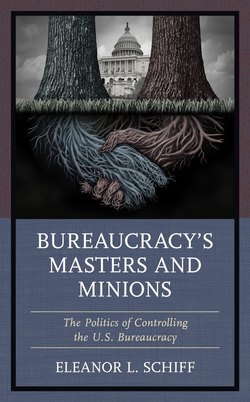Читать книгу Bureaucracy’s Masters and Minions - Eleanor L. Schiff - Страница 7
На сайте Литреса книга снята с продажи.
ОглавлениеList of Figures
| Figure 4.1 | Agent-Principal Incentives |
| Figure 4.2 | Naïve Hierarchical Models |
| Figure 4.3 | Naïve Heterarchical Models |
| Figure 4.4 | Naïve Hybrid Model |
| Figure 5.1 | Descriptive Statistics |
| Figure 5.2 | Cross-Sectional Time Series Regression Analysis on Political Control |
| Figure 6.1 | Annualized Dynamic Weighted Scores for Education Laws from 1947 to 2012 |
| Figure 6.2 | Education Policy Mood |
| Figure 6.3 | Variation in Workforce Composition, Workforce Structure, and Workforce Responsibilities at the U.S. Department of Education from 1988 to 2012 |
| Figure 6.4 | Descriptive Statistics |
| Figure 6.5 | ADL Regression Models for Education Policy Dynamics |
| Figure 6.6 | ADL Regression Models with Interactive Effects |
| Figure 6.7 | Effect of a One Unit Change in Managers for Democrats and Republicans Presidential Administrations on Education Policy |
| Figure 6.8 | Effect of a One Unit Change in Policy-Focused work for Democrats and Republicans Presidential Administrations on Education Policy |
| Figure 6.9 | Effect of a One Unit Change in Managers for Democrats and Republican-Controlled House on Education Policy |
| Figure 6.10 | Effect of a One Unit Change in Policy-Focused work for Democrats and Republicans-Controlled House on Education Policy |
